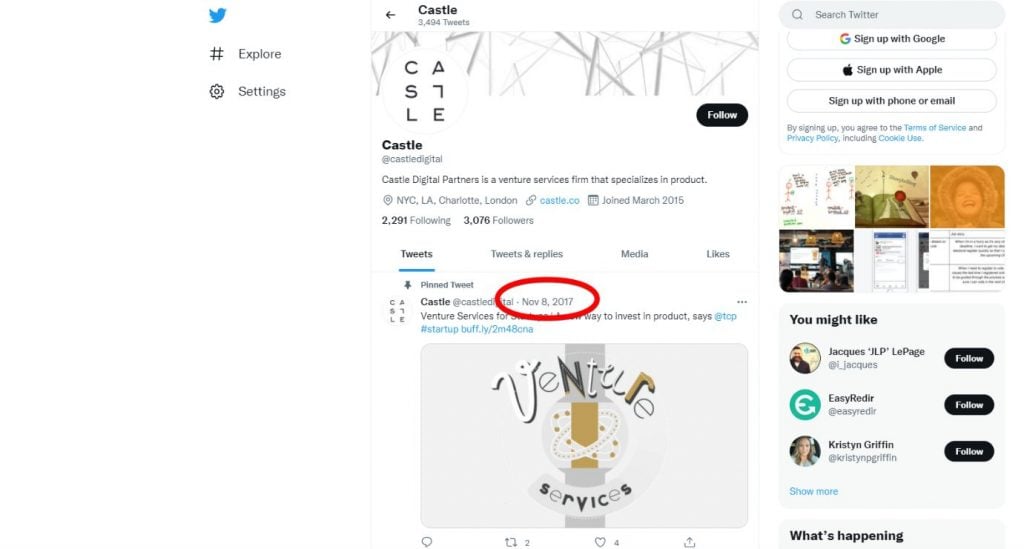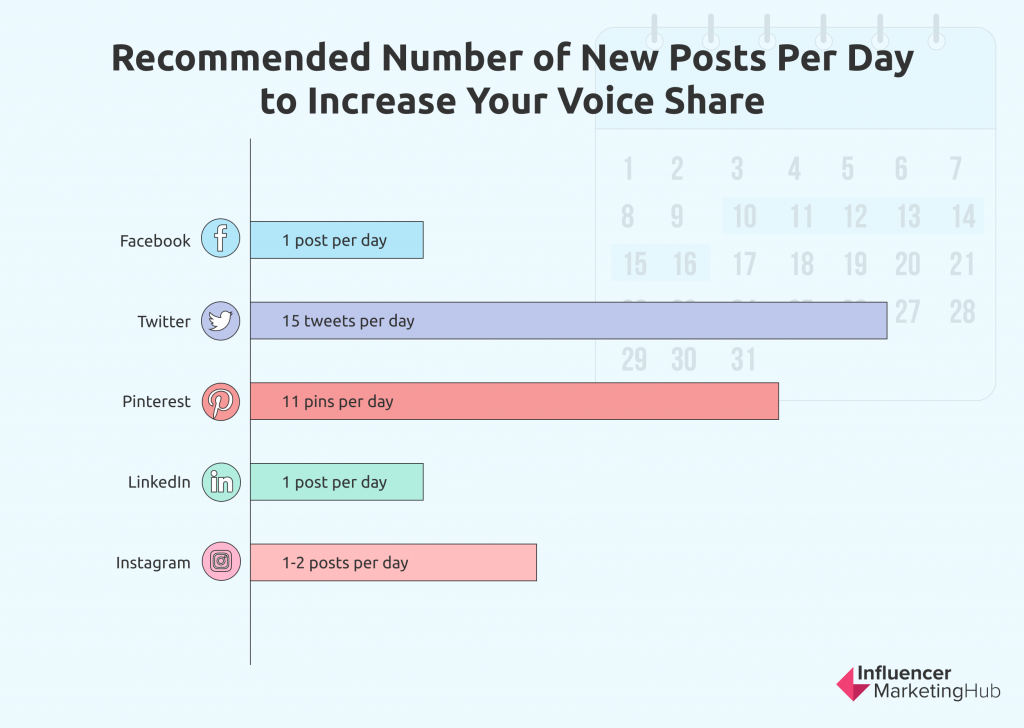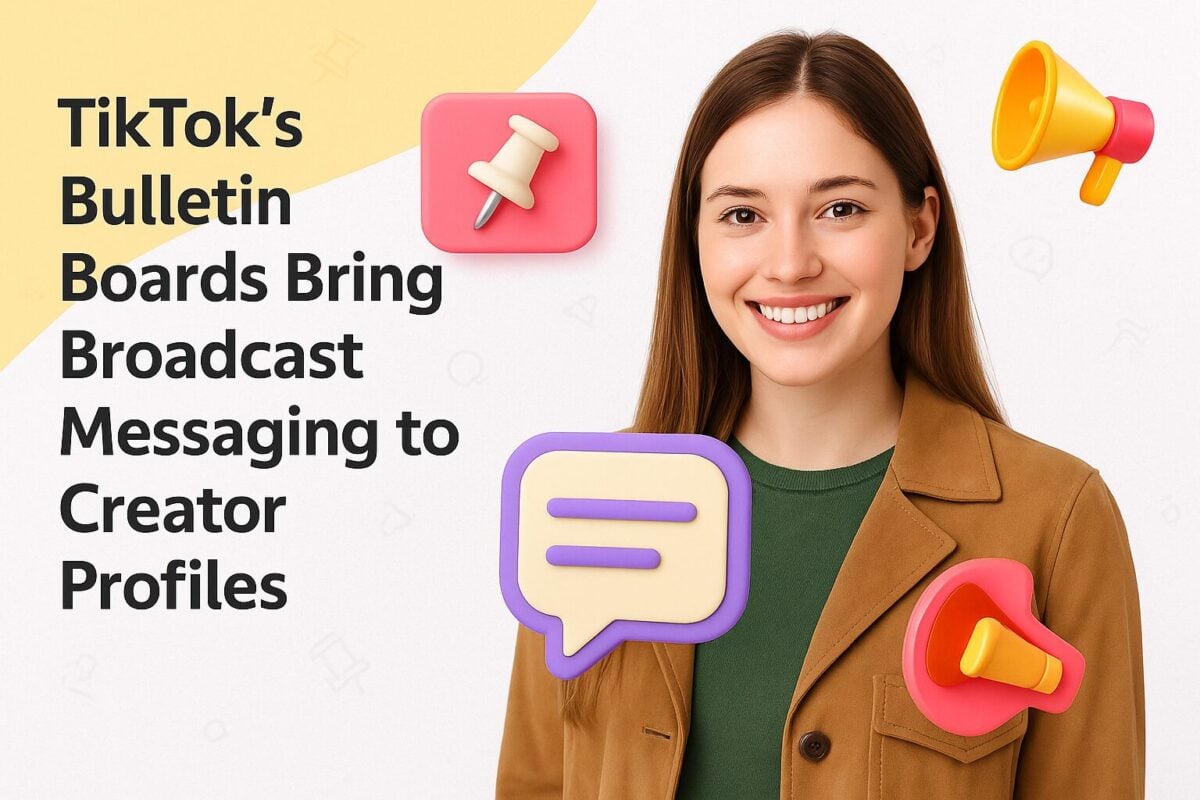Most businesses understand the importance of running social media accounts. You can use your social platforms to connect with your customers, build brand awareness, move customers through the purchasing cycle, and even sell directly to them. As a result, many businesses now have a presence on social media. However, all too often, that presence is woeful. The social pages look like half-hearted attempts to create something simply because somebody has heard that it's the right thing to do. Many companies have set up social pages with a hiss and a roar and then let them wither and die because nobody devoted any time to running them. But many businesses have successfully run social accounts for a small investment and become renowned as a voice on social media.
Unless you operate in a monopoly situation, you are likely to find yourself competing with many other firms in your industry, all wanting as large a share of the industry voice on social media as possible. This means that you need to establish a point of difference compared to your competitors. So why should people take an interest in the messages you wish to share on social media? Why should they include you in conversations and respect your views? It is your job to answer these questions and explain why you should matter to them.
8 Tips to Increase Your Share of Voice on Social Media:
- 1. Come Across as Personable – Give a Face to Your Business
- 2. Be Active on Your Social Accounts
- 3. Engage With Your Followers
- 4. Become a Thought Leader in Your Industry or Niche
- 5. Create Quality Content
- 6. Make Your Content Easy to Share
- 7. Use Social Media as a Significant Communications Channel
- 8. Include Social Media in Omnichannel Marketing
What is Share of Voice on Social Media?
It can be challenging to make yourself heard on social media. The major social networks are so big that even the posts of enterprise goliaths can become lost in a sea of posts. We Are Social emphasizes the size of the social world in their recent July 2021 update. They observe that:
- Global social media users have risen from 3.59 billion in July 2019 to 4.48 billion in July 2021
- Each internet user uses 6.6 social platforms per month on average
- 75.2% follow brands or research brands and products on social media
- Those researching brands use a mixture of social networks, question and answer sites, forums and message boards, messaging and live chat services, micro-blogs, vlogs, and online pinboards
Share of voice measures your brand's visibility to your potential customers on social media compared to your competition. It indicates whether you dominate the conversation on social media or whether you leave it to your competitors to do so. The greater your share of your industry's voice on social media, the more popular and dominant you will be.
Measuring Your Share of Voice on Social Media
You can look at your share of voice in several ways. First, you could take a macro view and look at your position in your overall niche. For example, do you dominate the conversation on Facebook about your industry or niche? Alternatively, you might take a micro-view and look at how well you perform for particular keyword terms or hashtags.
Share of voice is relatively easy to measure for paid social ads. You can view it as your share of the paid advertising for your targeted keywords, i.e., Your Advertising (for a keyword) / Total Advertising (for that keyword).
It can be trickier to measure for organic social media. However, the fact that it is more intangible doesn't make it any less important.
Ways to Increase Your Share of Voice on Social Media
1. Come Across as Personable – Give a Face to Your Business
Depending on the nature of your industry, it may be best for you to focus on the people in your business rather than on the company itself. Many people can be turned off by business social posts. They are more interested in hearing about the activities of their friends and family and aren't interested in what your business can offer them. Many of the social networks recognize this fact and discriminate against organic business posts.
Therefore, if you want to gain your share of the social voice, it will help if you personalize your social accounts. Many smaller organizations, in particular, put somebody front and center of all their posts.
ContentSavvy reports that photos with faces are 38% more likely to receive likes and 32% more likely to receive comments on Instagram than other images. Seeing a face behind a brand shows your community that you are human, not a robot that automates everything. Sharing a friendly face can stop people from scrolling and start conversations. Showing your face, rather than just a logo or generic image, also helps build trust.
Ways you can show more faces in your posts include:
- Sharing behind-the-scenes images and videos
- Speaking to the camera on some stories
- Doing live videos
- Using images including your team members from professional photoshoots
2. Be Active on Your Social Accounts
Probably the biggest "crime" for a brand operating social accounts is becoming invisible. Too many brands set up accounts, run them for a while, and then become disillusioned. They fail to see any short-term return and give up. They leave their social accounts in limbo, so they look more and more dated every day. How often have you gone to a business's social accounts, only to see the last tweet, video image, or other post uploaded is dated years ago?
However, although a weekly post or a couple of tweets is better than nothing, it will not be enough for you to build a reputation on social media. Unless you operate in a niche with little social presence, your voice will be drowned by those posting more regularly.
CoSchedule has written extensively about the benefits of using a social media content calendar. They observe how staying organized with a calendar makes it much easier to save time and maintain consistency. This is particularly important for small businesses, where resources are limited.
CoSchedule collated information from 14 studies, suggesting how regularly you should post on social media. Depending on the social networks where your brand operates, you should consider the following post frequencies if you wish to increase your share of voice:
- Facebook – 1 post per day, curating or resharing a post every other day
- Twitter – 15 tweets per day, retweeting or curating about seven tweets per day
- Pinterest – 11 pins per day, repinning or curating at least five pieces of content from others per day
- LinkedIn – 1 post per day, curating or resharing a post every other day
- Instagram – 1-2 posts per day, curating posts only when necessary and beneficial to your audience
3. Engage With Your Followers
It's important to remember the "social" part of social media. You need to be sociable to gain a voice on social media. Also, it may sound counter-intuitive, but having a voice doesn't mean you talk all the time. Nobody wants to hear you broadcast about how good you are. Instead, they want to engage in two-way conversations with you.
A common mistake by brands is thinking of their social pages as merely another form of advertising. Sure, they act as a promotion for you, but you can't just expect people to react positively if all they hear is "buy, buy, buy."
You need to interact with your target audience. It helps to have a staff member monitor your social accounts, look for questions, and promptly answer queries. If you actively engage with people and show that you can attempt to solve their problems and issues, you will increase trust and brand likeability.
The more positive conversations you have through your social channels, the larger your share of voice will be.
You should continue to engage in two-way communication even once you have built a reputation as an industry thought leader. By this point, you will undoubtedly "own" a sizable share of the voice in your niche, but you still can't sit back and just broadcast.
Denise Brosseau of the Thought Leadership Lab considers thought leaders as informed opinion leaders and the go-to people in their field of expertise. To be a thought leader, you have to make an impact in your field, and engage with others, encouraging them to learn from your advancements in your niche.
4. Become a Thought Leader in Your Industry or Niche
We have referred to the importance of becoming a thought leader. Once people consider you a thought leader in your industry, you have gained a substantial share of the voice in your industry.
However, becoming a thought leader takes much more than just sharing consistently high-quality social posts. To be a thought leader, you have to make an impact in your field, and engage with others, encouraging them to learn from your advancements in your niche.
Thought leaders are more often people than companies. So, you may need to establish a face for your company. They may not operate your social accounts, but their influence must show in nearly every post. Often, a thought leader is the face of their business. For example, many recognize Lolly Daskal as one of the foremost leadership experts in the world. She runs a self-titled website, where she offers coaching, consulting, and workshops and has a solid social presence. She has 1.2 million followers on Twitter and tweets on leadership-related issues. The occasional tweet promotes one of her books or other services, but the vast majority demonstrate Lolly's understanding of leadership and willingness to share her knowledge on that topic. Here, Lolly is the thought leader rather than the business she operates.
5. Create Quality Content
You aren't going to build a reputation as a thought leader if you don't create and share quality content. It is essential that whoever you make responsible for your social business accounts realizes that they are different from their personal accounts. Most businesses can't just share memes and funny cat videos.
You need to share quality content relating to your industry. This is one of the reasons why many firms do so well on LinkedIn. People expect to see quality industry-related content there and look forward to more of the same.
That doesn't mean that you need to operate a blog, although that can often be of value. You can gain respect for sharing tips, news, and other content about your industry. Many businesses have gained sound reputations for curating industry content created by others.
Also, remember to adapt your content for the particular social network you are using. You could, for instance, make informative videos and upload them to your company's YouTube channel. Then you could promote them via your other social channels.
Just remember that the golden rule is not to make your posts too sales related. People want to be educated, informed, or entertained by your posts. So sure, you can include the occasional sales post, but make it the exception rather than the norm.
6. Make Your Content Easy to Share
You need to make your content easy for people to share on their social channels. This both applies to the types of content you decide to create and share, as well as things you can do to make social sharing easier.
CoSchedule has shared 13 ways you can create shareable content that succeeds. Their suggestions are:
- Do competitive research
- Tell a story with your content
- Validate your audience's opinions
- Consider using controversy in your content
- Appeal to your audience's values
- Make your content useful
- Capitalize on trending topics
- Add shareable video and images
- Place sharing buttons where people will see them
- Get your audience involved in your content creation
- Get people inspired
- Create something relatable to a basic human experience
- Build hype for something you'll launch soon
7. Use Social Media as a Significant Communications Channel
To gain a positive reputation on social media, you need to be part of the social conversations. That means that you need to ensure that you carry out enough of your conversations using that medium.
A decade ago, comments were prevalent on blogs. If somebody enjoyed your blog, had questions to ask, or even disputed one of your assertions, they would add it as a comment at the bottom of your blog posts. Nowadays, few people leave blog comments. Instead, they prefer to interact via social channels.
Interested people are far more likely to comment about one of your blog posts, or YouTube videos, in reply to a social post where you've linked to the post or video.
Younger generations don't use emails very often. They may still have them for official emails, but they generally won't use email by choice. Therefore, you are far more likely to have interactions if you contact them by social means.
Conversational commerce, aka C-commerce, is also now popular. Here, businesses interact with their customers via messaging, chat, and other voice technology apps. WhatsApp is now the third-most used social platform, with 2 billion active users globally, and Facebook Messenger comes fourth, with 1.3 billion active users.
8. Include Social Media in Omnichannel Marketing
As important as social media marketing is now, don't move all your communication to that medium. There is little point in increasing your voice on social media if it decreases your voice elsewhere. Many brands now engage in omnichannel marketing. Aspect Software found that businesses that adopt omnichannel strategies achieve 91% greater year-over-year customer retention rates than businesses that don't.
With omnichannel marketing, you deliver potential customers personalized messages using all of your channels to create a unified experience. A brand will often reach customers with different media as they pass through the stages of their purchasing cycle. Therefore, to increase your share of your industry voice, you want to interact with potential customers via multiple channels, some social, some non-social digital, and some traditional offline media. The important thing is that you create a consistent, seamless experience for consumers across all these varying channels.




